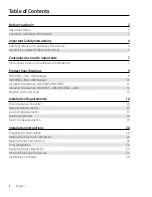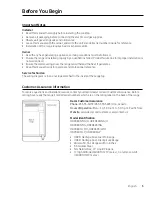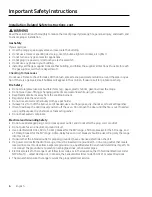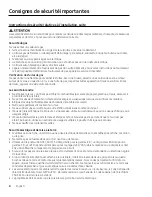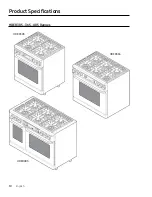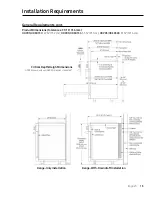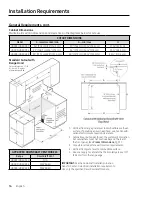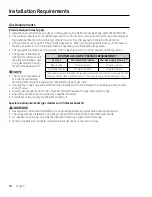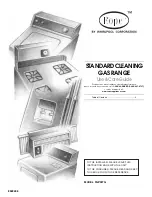
5
English
Important Safety Instructions
Installation-Related Safety Instructions
•
Read these instructions thoroughly to reduce the risk of property damage, fire, personal injury, and death,
and to ensure proper installation.
• These safety instructions cover installation-related safety issues. For use-and-care-related safety instruc-
tions, including general use, electrical, cooktop, and oven safety, see the User Manual.
Installation-Specific Safety
• Remove all tape and packing material.
•
Use only new, flexible connectors to make the gas connection.
•
Ensure the anti-tip bracket is properly installed (Pg. 17).
• The range should be moved by two or more people.
• After unpacking the range, remove all accessories, taking care with heavy pieces.
• Verify that no parts came loose or were damaged during shipping.
•
Ensure the range is correctly installed/adjusted by a qualified installer for the type of gas (natural or LP) you
will use. For the range to use LP gas, the installer must replace all surface burner orifices with the provided
LP orifice set, and reverse the GPR adapter. These adjustments must be made per manufacturer instruc
-
tions and local regulations. The installer shall ensure proper conversion.
•
Installation of the range must follow local codes or, in their absence, the National Fuel Gas Code, ANSI
Z223.1/NFPA.54, latest edition. In Canada, installation must follow the current Natural Gas and Propane In
-
stallation Code, CAN/CGA-B149.1, or the current Propane Installation Code, CAN/CGA-B149.2, and local codes
where applicable. The range is UL-certified according to ANSI Z21.1/CSA 1.1, latest edition.
Appliance-Location Safety
• Install the range indoors away from weather/water/strong drafts.
• If the range is near a window, do not hang paper blinds or curtains that could be blown over/onto the range.
•
The range must be within easy reach of a grounded, 3- or 4-prong outlet.
•
Wall coverings around the range must withstand heat up to 194°F (90°C).
•
The floor under the range must be level and able to support the range (48”: 635 lbs.); synthetic flooring
(e.g., linoleum) must withstand 180°F (82°C) without shrinking, warping, or discoloring; the range must be
separated from carpeting by a sheet of ¼” plywood or similar insulator.
•
The range needs sufficient space all around for its vents to properly exhaust heat and fumes.
•
If cabinet storage above the range is unavoidable, allow at least 30 in. (76.2 cm) from cooking surface to
cabinet bottom, or install a range hood that projects outward 5 in. (12.7 cm) or more beyond the cabinetry.


